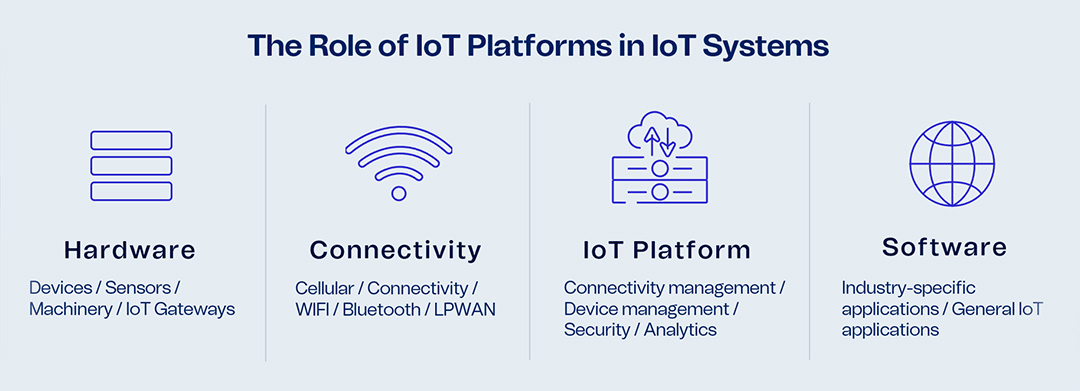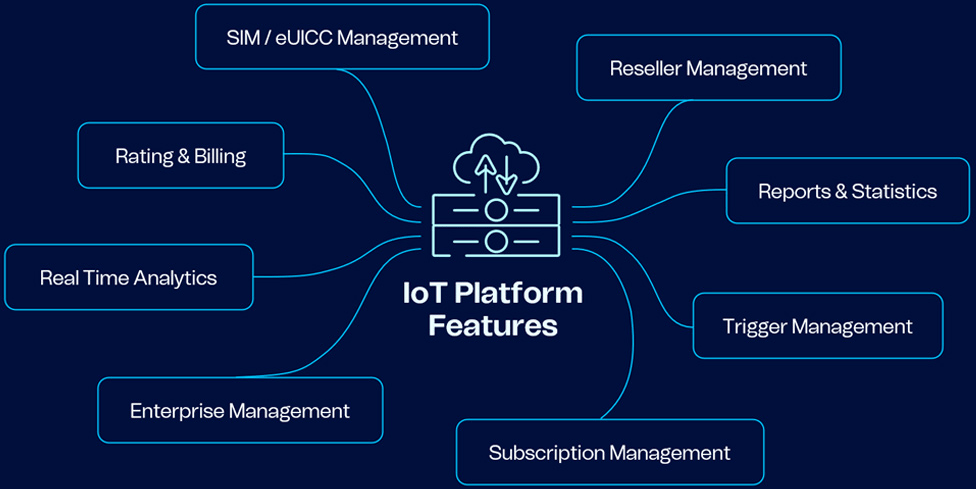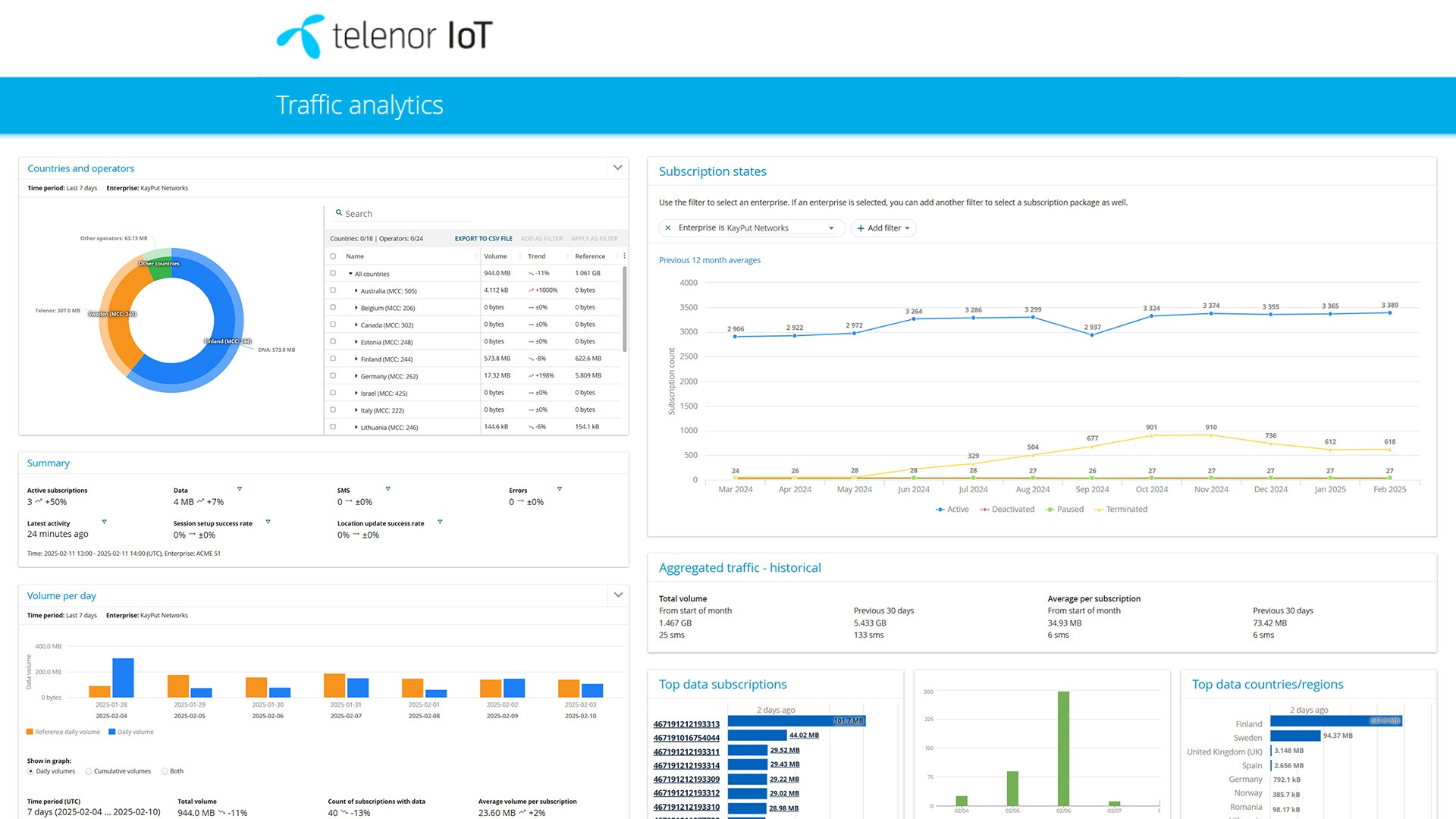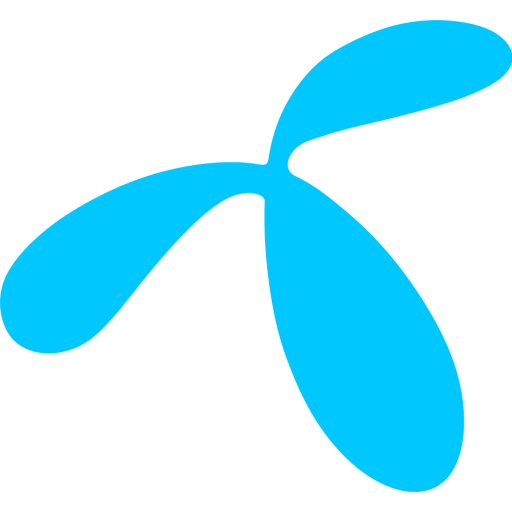IoT Platforms – An Introduction
IoT platforms connect and manage devices securely, enabling scalable and data-driven operations.
Billions of IoT devices require optimized communication, data management, performance, and security. This demands automated, scalable IoT platforms that simplify complexities and enable seamless control of IoT deployments. With six billion cellular IoT connections expected by 2030, business intelligence, enhanced analytics, and AI services are introducing new IoT platform capabilities to accelerate growth and aid scalability.
What Is an IoT Platform?
An IoT platform is a foundational system connecting devices, managing communication, and ensuring seamless data flow. It acts as the glue of the IoT ecosystem.
Think of an IoT platform as a bridge between hardware—such as sensors, devices, and machinery—and software, including applications and analytics. These platforms integrate connectivity management, device management, analytics, and security into a single cohesive framework.
For example, a cloud-based IoT platform might enable remote monitoring of assets worldwide, while an industrial IoT platform could focus on automating and optimizing factory operations. Despite the diversity of applications, the core goal of any IoT platform remains the same: simplifying operations and delivering actionable insights.
By providing a centralized framework, IoT platforms allow businesses to focus on innovation while ensuring their IoT ecosystems operate efficiently, securely, and reliably.

How an IoT Platform Connects and Processes Data:
A Smart Thermostat Example
1.
Hardware
IoT devices and sensors collect environmental data, such as a smart thermostat measuring room temperature.
2.
Connectivity
The collected data is transmitted from the hardware to the IoT platform using communication networks such as Wi-Fi, Bluetooth, or cellular networks like 3G, 4G, 5G, and Low-Power Wide-Area (LPWA) networks. For instance, the smart thermostat sends the temperature data to the cloud via cellular networks.
3.
IoT Platform
Once the data reaches the IoT platform, it is processed, stored, and analyzed. The platform provides tools for device management, connectivity management, security, and analytics.
4.
Software
The processed data is then used by software applications to provide value to the user. This could be a mobile app that allows the user to control the thermostat remotely or an analytics dashboard that provides insights into energy usage.
In summary, the hardware collects data, connectivity transmits the data to the IoT platform, the platform processes and analyzes the data, and the software uses the data to deliver useful applications and services to the user.
The Different Types of IoT Platforms
The IoT platform market is diverse, with each type catering to specific use cases and industries. Let’s take a closer look at some common types:
Cloud IoT Platforms
Industrial IoT Platforms
IoT Connectivity Management Platforms
Remote IoT Platforms
IoT Device Management Platforms
Application Enablement Platforms
IoT Advanced Analytics Platforms
AI-Powered Connectivity Monitoring
How to Choose a Platform That is Right for Your Company
Selecting the best IoT platform solution requires careful consideration of your organization’s unique needs. Here are a few guiding principles to help define your IoT platform architecture:
Understand your needs
Begin by identifying the primary goals of your IoT deployment. Are you focused on remote monitoring, predictive maintenance or real-time data analysis? Clearly defining your objectives will narrow down your options.
Evaluate security features
With the rise in IoT-related cybersecurity threats, prioritizing IoT platform security is essential. Look for platforms that offer encryption, secure authentication and automated monitoring to address vulnerabilities.
Consider scalability
As your IoT deployment grows, your platform should scale with it. A scalable IoT platform is crucial for businesses planning to expand operations in the future.
Assess integration capabilities
Ensure the remote IoT platform can integrate seamlessly with your existing IT systems. Compatibility with third-party tools and software is essential for maximizing the value of your IoT platform for enterprise.
Compare pricing models
IoT platform pricing varies widely, from subscription-based models to pay-as-you-go options. Select a model that aligns with your budget and expected growth.

Key IoT Platform Functions
IoT platforms streamline critical aspects of IoT deployments. Let’s break down their key functionalities.
1.
Connectivity management
Managing the vast array of networks that IoT devices rely on can be daunting. IoT connectivity platforms take on this challenge, ensuring that devices can communicate seamlessly across cellular networks (such as NB-IoT and LTE-M), Wi-Fi, satellite and other technologies.
A robust IoT management platform not only facilitates communication but also optimizes network usage and reduces downtime. For example, a logistics company using IoT devices in remote areas might rely on a connectivity platform to ensure continuous communication across varying network conditions.
2.
Monitoring and analytics
IoT deployments generate enormous amounts of data that must be processed, analyzed and acted upon. An IoT monitoring platform helps to make sense of this data by providing real-time insights into device performance, system health and operational efficiency.
This capability is particularly critical for predictive maintenance, where early warnings from IoT sensors can prevent costly equipment failures. Industries like energy, manufacturing and transportation use these analytics to improve reliability and reduce downtime.
3.
Security and risk mitigation
4.
Integration with enterprise systems
Telenor IoT: Platform Features for Seamless Connectivity

With built-in monitoring tools, the platform allows users to track device performance, manage SIM cards, and monitor data usage. Devices can also be configured and updated remotely. This helps organizations optimize performance and improve customer satisfaction through data-driven decisions.
A complete view of all deployed devices helps detect anomalies and maintain control over the entire IoT deployment. Automated alerts and actions reduce the need for manual subscription monitoring, while seamless activation and deactivation of subscriptions simplify management.
The system also helps prevent unnecessary costs by enforcing data usage thresholds and triggering automated responses when limits are exceeded.
Balancing IoT Platform Costs and Value
IoT platform pricing is sometimes viewed as an additional cost that high-volume, low margin IoT use cases can’t support. However, IoT platform provider pricing has been designed to be highly competitive, enabling deployments to scale up on a pay-as-you-grow basis. This results in an IoT platform being a small incremental, per device managed cost which can justified against the costs incurred by not adopting a platform.
By adopting an IoT platform as a service approach, IoT organizations can access a state-of-the-art IoT connectivity platform that ensures they are able to manage growth. The as a service model means substantial upfront investment in everything from servers to IT professionals can be avoided. Instead, a cloud-based, highly scalable and flexible platform approach can be chosen, allowing organizations to keep their costs in step with the number of IoT devices they support.
The Future of IoT Platforms
The IoT landscape is evolving rapidly, and IoT platforms are at the forefront of this transformation. Here are a few key trends shaping the future:
Edge computing
AI-powered IoT
Sustainability through IoT
Connectivity innovations
Monetization, measurement, usage and behavior tracking and self-service are being transformed by new technologies such as the new eSIM standard. eSIM greatly simplifies connectivity management by replacing the physical SIM with a soldered alternative. In addition, the arrival of 5G standalone (SA) adds further advantages in low latency, high device density and greater capacity to IoT. The IoT platform core network will be upgraded to support 5G SA.
These technologies will combine with existing solutions to accelerate growth and support increased device connections and larger flows of data. Berg Insight, for example, reports that global IoT connectivity revenues reached €12.4 billion in 2023 and are projected to grow to €21 billion by 2028.
Conclusion
The size, geographic spread and complexity of IoT deployments mean individual device management by people isn’t practical anymore. Instead, businesses rely on IoT platforms to enable streamlined operations, enhance security and unlock valuable insights.
Whether you’re deploying an industrial IoT platform for factory automation or a remote IoT platform for monitoring assets in hard-to-reach areas, selecting the right platform is key to your success.
The size, geographic spread and complexity of IoT deployments mean individual device management by people isn’t practical anymore. Instead, businesses rely on IoT platforms to enable streamlined operations, enhance security and unlock valuable insights.
Whether you’re deploying an industrial IoT platform for factory automation or a remote IoT platform for monitoring assets in hard-to-reach areas, selecting the right platform is key to your success.
Ready to explore how an IoT platform can optimize your operations? Learn more about Telenor’s IoT Platform now.

